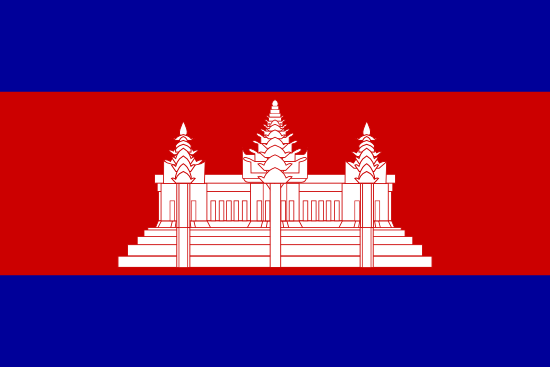Best things to do in Cambodia
Find out more about those top places in Cambodia
Find out more about those top places in Cambodia

Looking for a destination that blends jaw-dropping temples, fascinating history, tropical beaches, chaotic charm, and just the right amount of “what did I just eat?” cuisine? Welcome to Cambodia, the land where ancient ruins and modern tuk-tuks collide in glorious travel harmony. Whether you’re a history nerd, beach bum, foodie, or someone just looking for that elusive blend of adventure + chill, this travel guide to Cambodia is your golden ticket.
Let’s dive into the top attractions, things to do, and the absolute must-see places to visit in Cambodia—and yes, we promise to make it way more fun than your old high school geography class.
Cambodia is snuggled into the heart of Southeast Asia, bordered by Thailand to the northwest, Laos to the northeast, Vietnam to the east, and the Gulf of Thailand to the southwest. With more than 180,000 square kilometers of land to explore, Cambodia may not be the biggest country around, but it sure packs a punch when it comes to sightseeing.
Its capital, Phnom Penh, is the bustling heart of the nation, known for its mix of colonial architecture, traditional temples, chaotic traffic, and surprisingly good coffee.
Population: Over 14.8 million friendly faces
Official Religion: Theravada Buddhism (practiced by about 92% of Cambodians)
Minority Groups: Vietnamese, Chinese, Chams, and over 30 hill tribes
Government: Constitutional monarchy
Fun fact: Cambodia has been ruled by kings, colonized by the French, bombed during the Vietnam War, and then slowly rebuilt into the vibrant country it is today.
But enough background—you're here for the places to visit in Cambodia, not a political science lecture.
If you only have time for one stop in Cambodia (though we strongly advise against rushing this adventure), let it be Siem Reap. Why? Because it’s the gateway to the world-famous Angkor Wat, one of the top attractions in Cambodia—and in the entire world.
Explore Angkor Wat at sunrise: Yes, it’s crowded. Yes, it’s early. But standing in front of this majestic temple complex as the sky turns shades of orange and pink is nothing short of magical.
Don’t skip the lesser-known temples: Ta Prohm (where Tomb Raider was filmed) is being slowly swallowed by jungle, and Bayon is the one with all the giant stone faces staring at you. Creepy? A little. Cool? Absolutely.
Pub Street: After all that cultural immersion, balance it out with $1 beers, dancing backpackers, and surprisingly good street food.
Phnom Penh is chaotic, charming, and totally underrated. As the capital city, it’s full of historical sites that walk you through the country’s complicated past—from ancient royal palaces to the horrors of the Khmer Rouge regime.
Visit the Royal Palace and Silver Pagoda: Golden spires, manicured gardens, and monks gliding by in saffron robes—it’s like a living postcard.
Tuol Sleng Genocide Museum and the Killing Fields: Not your average day out, but incredibly important. These memorial sites help visitors understand the dark period of Cambodia’s recent history. Sobering but necessary.
Walk along the Riverside: For a change of pace, stroll by the Tonlé Sap River and grab a fresh coconut or a quirky souvenir.
When people talk Southeast Asia beaches, Cambodia often gets overlooked. But spoiler: it shouldn’t.
Sihanoukville: It's had a bit of a glow-up (read: casinos and construction), but it’s still your launchpad to the islands.
Koh Rong and Koh Rong Samloem: White sand, turquoise water, hammocks between palm trees—need we say more? These islands are perfect for snorkeling, diving, or doing absolutely nothing.
If Phnom Penh is go-go-go and Siem Reap is culture overload, Kampot and Kep are your places to unwind.
Kampot is known for its laid-back riverfront, pepper plantations (yes, you can tour one!), and dreamy sunsets over the Elephant Mountains.
Kep, on the other hand, is your go-to for fresh crab, colonial ruins, and a peaceful vibe that says “stay a while.”
Pro tip: Try the crab with Kampot pepper sauce. It’s messy, spicy, and totally worth it.
Beyond temples and beaches, Cambodia offers a surprising number of nature escapes.
Cardamom Mountains: One of Southeast Asia’s last great rainforests. Think hiking, waterfalls, and eco-lodges where your morning alarm is a gibbon call.
Tonlé Sap Lake: The largest freshwater lake in Southeast Asia, where floating villages offer a glimpse into an entirely different way of life.
Currency: Cambodian Riel (KHR), but US dollars are widely accepted.
Transport: Tuk-tuks, buses, and budget flights. Or if you’re brave, rent a scooter.
Best time to visit: November to March (dry season, happy weather).
Language: Khmer is the official language, but you’ll get by with English in most tourist spots.
Cambodia is not just a stopover—it’s a destination in its own right. From ancient empires and temple-hopping adventures to serene beaches and vibrant street markets, it offers something for every kind of traveler.
And while Cambodia has had a rough past, its people are among the kindest you’ll ever meet, its food will surprise your taste buds in the best way possible, and its landscapes will leave you wondering why you didn’t come here sooner.
So pack your bags, grab that travel hat, and add Cambodia to your must-visit list. This travel guide to Cambodia only scratches the surface—go see it for yourself.